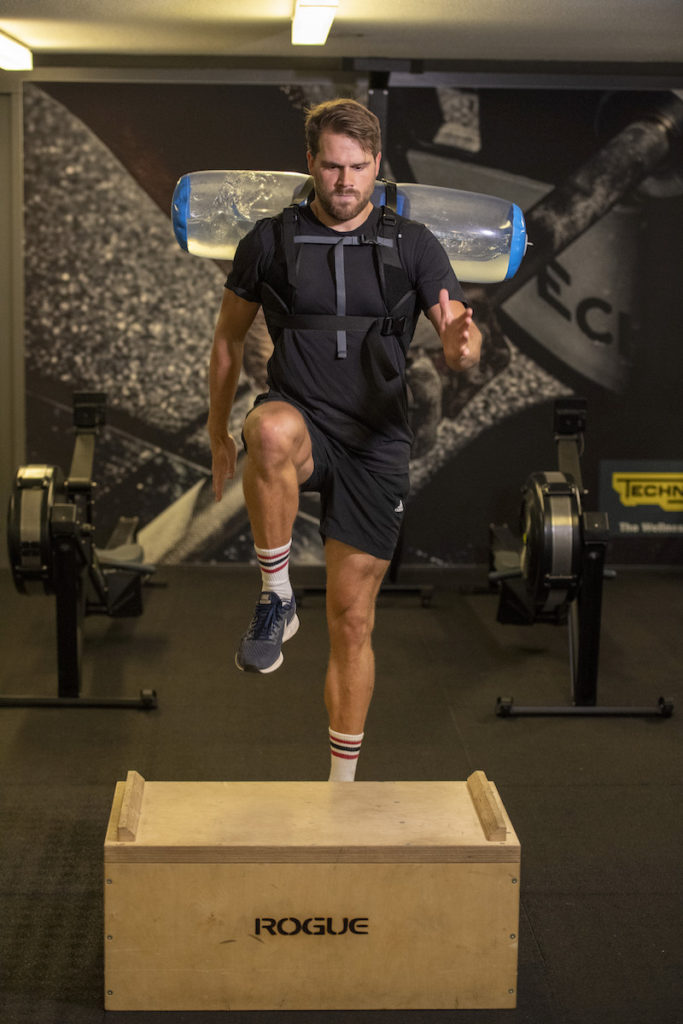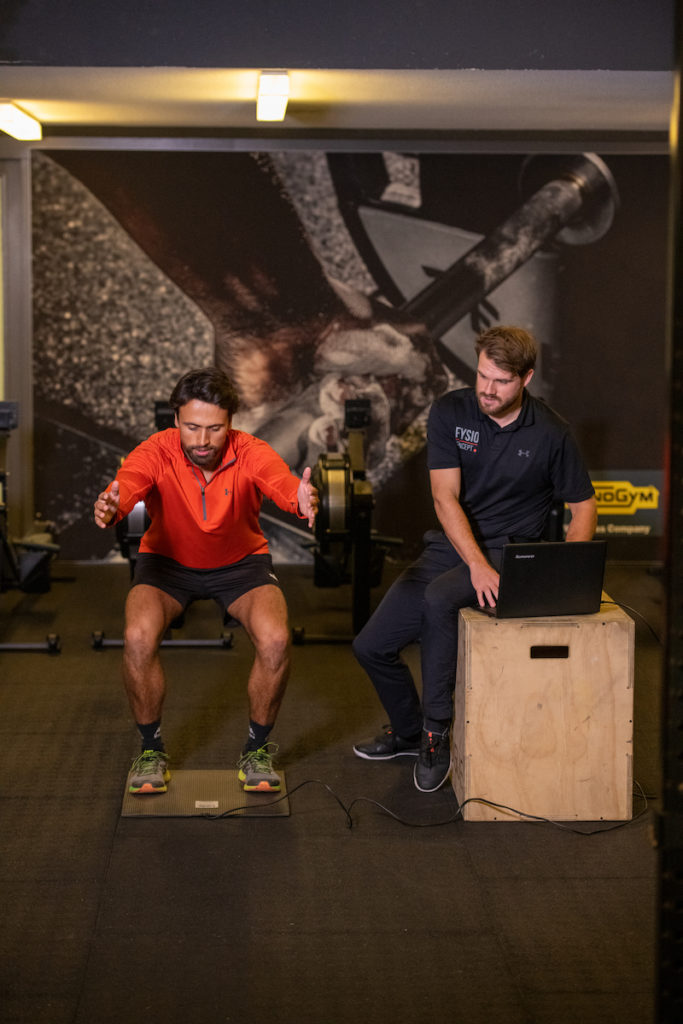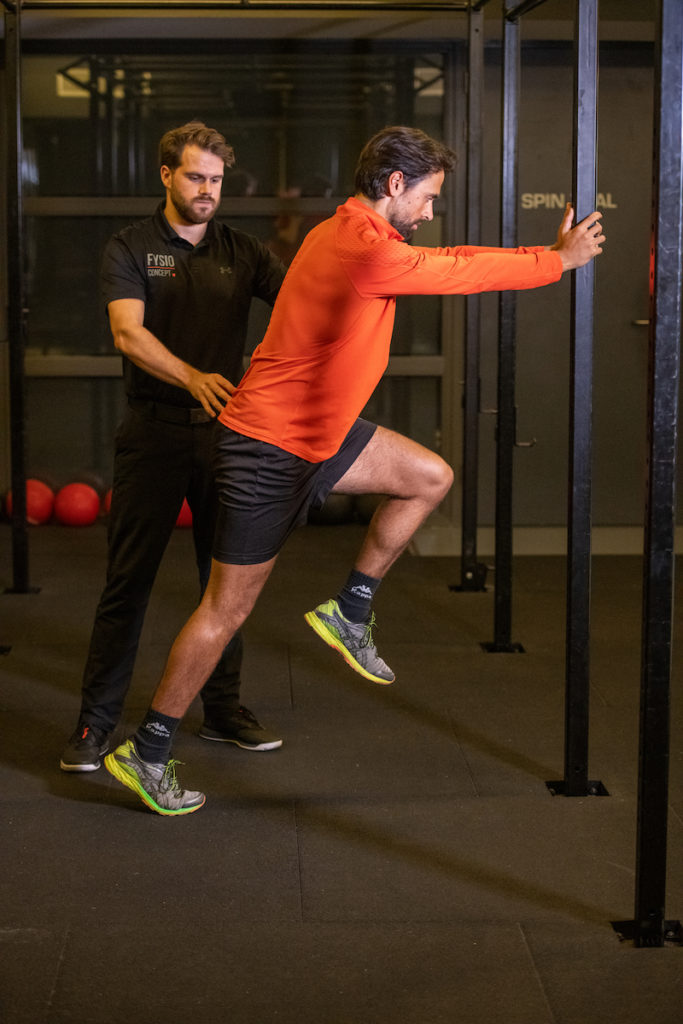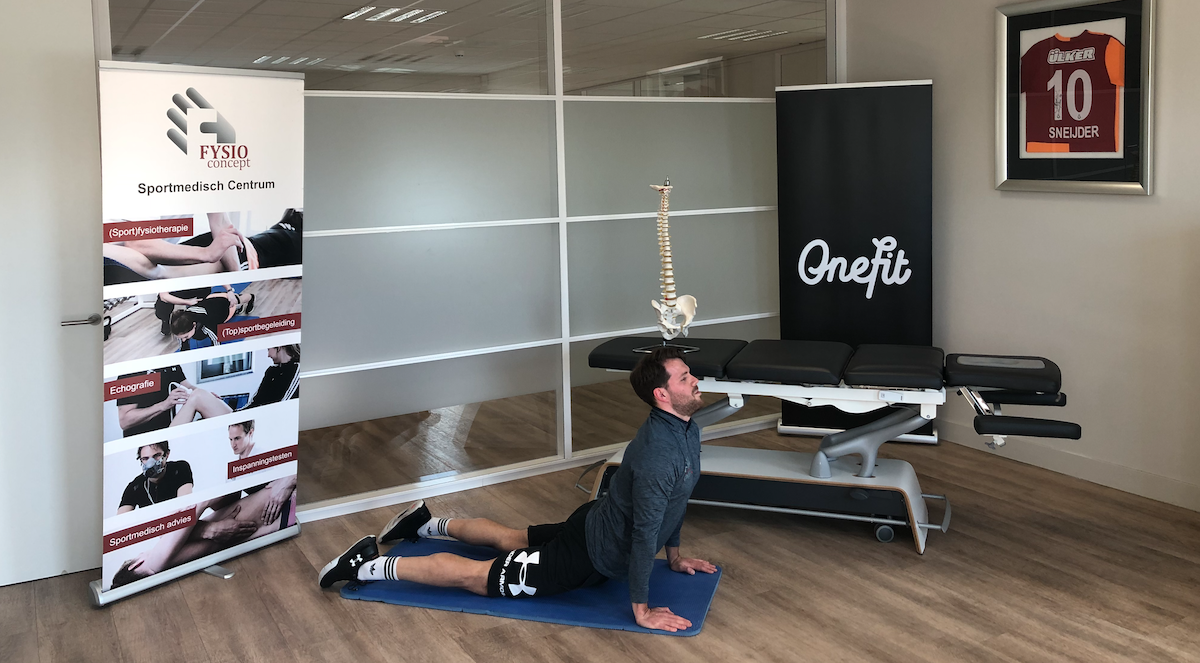And who better to ask than an experienced physiotherapist. Sjoerd is an experienced physio at FysioConcept, where you can also go with OneFit when everything opens up again. You have submitted questions via Instagram, of which he will answer the 10 most frequently asked questions about working from home and a strong body in this blog.
Scroll down for a video with easy exercises you can do at home to improve your posture.

- 1. What are the best tips & tricks for a good homework posture?
Everyone is currently sitting at home at a dining table, desk or another alternative to their office environment. If you don’t have an office chair at home, then you have to make do with dining chairs or other seating options. How do you prevent a collapsed posture?
Sjoerd: “In the office, the office chairs are made to support the body correctly so that you can sit in the same position for longer. At home, you soon end up at the kitchen table or with your laptop on your lap on the couch. Normally a posture that is as upright as possible is the healthiest. In this way, your body stays as straight as possible above your body’s center of gravity, which means that less strength is needed to hold that posture.
In my opinion, the key to long working from home is variety. Alternate your posture regularly so that each time a different part is pressured. This allows other parts to recover a bit. Get up regularly, walk around the living room, do some stretching exercises, move yourself from the kitchen table to the couch and back again”.
- 2. How do I prevent a stooped posture?
The moment that you tend to start hanging in your chair, you can pay attention to the following things: choose a chair in which it’s not or hardly possible to hang in. You can make sure that you put a pillow in your lower back so that your lower back is supported there. And variety is very important!

- 3. Tips & tricks for a stuck neck, shoulders, and back. Which stretches are best?
Slow stretching can briefly relieve tension in your body. It is generally a short term effect but can provide temporary relief.
A good example of this is the ‘sun salutation’. This yoga pose is mainly focused on the mobility of the spine, but as a dynamic stretching exercise also involves many other muscle groups. It is also important for jammed muscles to do some form of strength training. By activating and “waking up” the right muscles, they contribute to an active and healthy posture and support and relieve the muscles that are “stuck”.
- 4. Can sitting on a gymnastics ball instead of an (office) chair help against back problems?
Working on a gymnastics ball can be a temporary solution if you are quickly inclined to start hanging in your chair. You need to maintain a much more active posture because you do not have support in your lower back. However, this can quickly cause fatigue and acidification, especially if you’re not used to it. So here too, the key remains to change your posture regularly.
- 5. Tips & Tricks for exercises that help against a sore wrist (mouse arm).
A mouse arm is a typical overload of the wrist and forearm. If you repeat a light activity, such as operating your mouse, often enough, it can cause irritation. Unfortunately, a deteriorated working posture can increase the strain and increase the risk of these kinds of complaints. Again, gentle stretching exercises combined with changing your posture and taking sufficient breaks can help prevent and reduce the symptoms.

- 6. How can I prevent overstretching of my elbow while exercising with weights?
Stretching your elbow during strength training is something you can prevent yourself. It can be as simple as making the movement shorter during the exercise. If you are very flexible, you may be able to overstretch more quickly. This sometimes makes it a bit more difficult to keep the movement under control. If so, you can start with a lighter weight to teach yourself the movements better. After that, you can build up the weight slowly.
- 7. Can I do my workouts at home barefoot (without good sports shoes)? For the downstairs neighbors for example.
It depends a bit on the workout you’re doing. In general, it shouldn’t be a problem to do your workouts barefoot, as long as you have enough grip when you get sweaty feet. It can sometimes be a bit annoying if you’re jumping a lot, always landing on your bare feet. Exercises out of standing position will, therefore, be a little easier than jumping exercises. It can be an adjustment for your body and you miss the support and cushioning function of your shoes. Therefore, build up the intensity of your training. Let your body get used to the new situation.
- 9. How can I make my knees stronger?
With strength training! All the muscles of your legs, from your feet to your hips, are important for your knees. For example, strong thigh muscles absorb blows and landings and the muscles around the hip control and coordinate your knees. If you’ve never done a lot of strength training before, it’s important to learn the exercises with a low weight or only with bodyweight before making it heavier. When the strength in the legs has increased, jumping and running forms should also contribute to strong and resilient knees.

- 10. Tips & Tricks for the best stretches at home
Stretching exercises, in which you maintain one posture for a long time, can provide relaxation in the short term. Make sure you hold the posture for at least 30 seconds and do it several times a day, especially if you start getting pains while working from home. The same applies to foam rolls. This can also relieve certain complaints and pains in the short term. Unfortunately, the effect is short-lived, so you should also do this more often a day.
Be careful with static stretching before working out. In order to work out, you need certain tension in your muscles. If you remove this tension with stretching exercises, this could lead to problems. You could do dynamic stretching exercises, such as the sun salutation, before working out, such as running. This does not reduce functional tension but improves mobility.
If running causes stiffness and tension in your muscles, you can try to relieve this with foam rollers and racks, but do so separately from the sport itself, for example later in the day or on a rest day.
Find your Fit



